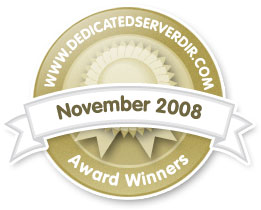Please read Cpanel documentation. Here you can find answers for almost all your questions.
Control Panel (CPanel) Documentation
Knowledge Base with common questions
Find a quick resolution in Knowledge Base:
Still have questions?
Contact our support staff if you have a question.
VIDEO TUTORIALS
CPANEL TUTORIALS
|
|
|
| Changing the look and feel of cPanel | Watch movie |
| Change your contact information | Watch movie |
| Access cPanel from desktop or bookmarks | Watch movie |
| Subdomains creation and management | Watch movie |
| Parked domains creation and management | Watch movie |
| Addon domains creation and management | Watch movie |
| Add MySQL databases in cPanel | Watch movie |
| MySQL databases creation and management | Watch movie |
| Make a specific web page redirect to another page | Watch movie |
| Change Password for your account | Watch movie |
| Password Protect a certain part of your site | Watch movie |
| Generate or import GnuPG Keys | Watch movie |
| Prevent other websites from directly linking to files on your website | Watch movie |
| Block a range of IP addresses to prevent them from accessing your site | Watch movie |
| Blogs, Bulletin Boards, CMS, Chat, Ecommerce... | Watch movie |
| Manage your files with the File Manager | Watch movie |
| Download a backup zipped copy of site | Watch movie |
| Access web site through FTP | Watch movie |
| Easily drag and drop files to your hosting account | Watch movie |
| Manage Email Accounts with your domain(s) | Watch movie |
| Send a copy of all mail from one email to another | Watch movie |
| Autoresponder - message back automatically | Watch movie |
| Send messages to a large group of people | Watch movie |
| Protect your inbox from spam | Watch movie |
| FRONTPAGE TUTORIALS | |
|
|
|
| Publishing your web via HTTP | Watch movie |
| Publishing your web in live mode via HTTP | Watch movie |
| Publishing your web via FTP | Watch movie |
| Deleting files off your server | Watch movie |
| Creating forms in FrontPage | Watch movie |
| Password protecting a directory (subweb) | Watch movie |
| Changing your password in FrontPage | Watch movie |
| E-MAIL SETUP TUTORIALS | |
|
|
|
| Creating an email account in Outlook Express | Watch movie |
| Creating an email account in Outlook 2002 | Watch movie |
| Creating an email account in Netscape Communicator | Watch movie |
| Creating an email account in Eudora | Watch movie |
| Creating an email account in Incredimail | Watch movie |
| Creating an email account in Pegasus | Watch movie |
| SITE STUDIO TUTORIALS | |
|
|
|
| Getting started in SiteStudio | Watch movie |
| Creating a Product Page in SiteStudio | Watch movie |
| Creating an FAQ Page in SiteStudio | Watch movie |
| Creating a Download Page in SiteStudio | Watch movie |
| Editing a page in SiteStudio | Watch movie |
| Password protecting a page in SiteStudio | Watch movie |
| Configuring your Site Settings in SiteStudio | Watch movie |
|
|
|
1. FTP Upload Instructions CuteFTP 4.0 2. FTP Upload Instructions WS_FTP 1. Instructions Open the CuteFTP client and click on the Quick Connect button.
Enter your server name, username, and password in the Quick Connect boxes. This information was supplied by AvaHost in your account setup email. The server name is your domain name or your IP address. If your domain name has not yet transferred / registered, you must use your IP as your address.
Once you have entered your login information, click the "Connect" button at the end of the login bar (the circled lightning bolt in the graphic above next to "Port: 21").
Once you are connected to the server, navigate
to your local website folder in the left window pane. You can
upload files to the server by dragging and dropping from the left
window to the right window. Note: in order for your site to show up when you type in your domain name into a web browser, You must place all of your files in the www subdirectory in your account's directory. The first page or the home page must be named one of these file names, if there is an existing "index.html" you must replace it with your own: index.htm FTP Upload Instructions
WS_FTP Open the WS_FTP client and click the NEW
button (shown below).
2. Host
Name/Address -
4. User ID - this is the "username" that
was issued to you when you signed up with AvaHost
5.
Click "Apply" and Click "OK"
To Transfer files to your remote
directory. Note: in order for your site to show up when you type in your domain name or IP address into a web browser, the first page or the home page must be named one of these file names: index.html (standard HTML extension) |
More info:
- Creating and Publishing the site with the Free HTML Editor NVU
- Instructions on setting up your e-mail within Outlook Express are located here: Outlook Express
- Guide to uploading your website with FTP
- FTP Frequently Asked Questions
- Domain Name Transfer Frequently Asked Questions

|

60 Day Money Back Guarantee!
OUR AWARDS

#1 Budget Hosting

Reseller Hosting Award Winner -
November 2008.

AvaHost - #1 Fastest Growing Company -
November 2005.

Web Hosting Review
Top 10 Hosts - 2011.






